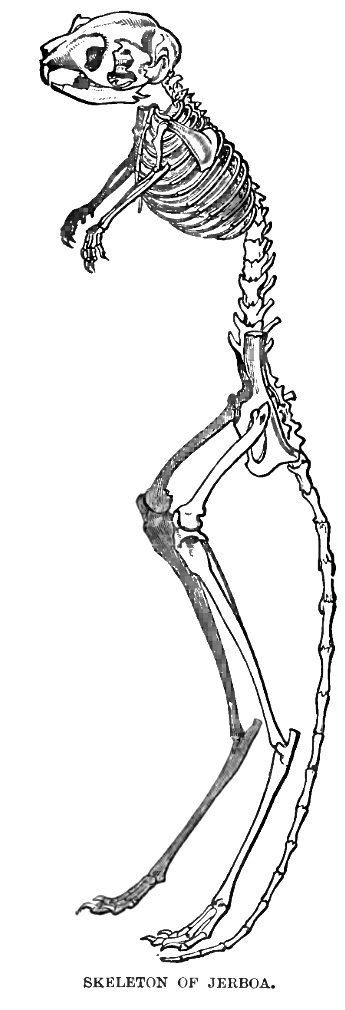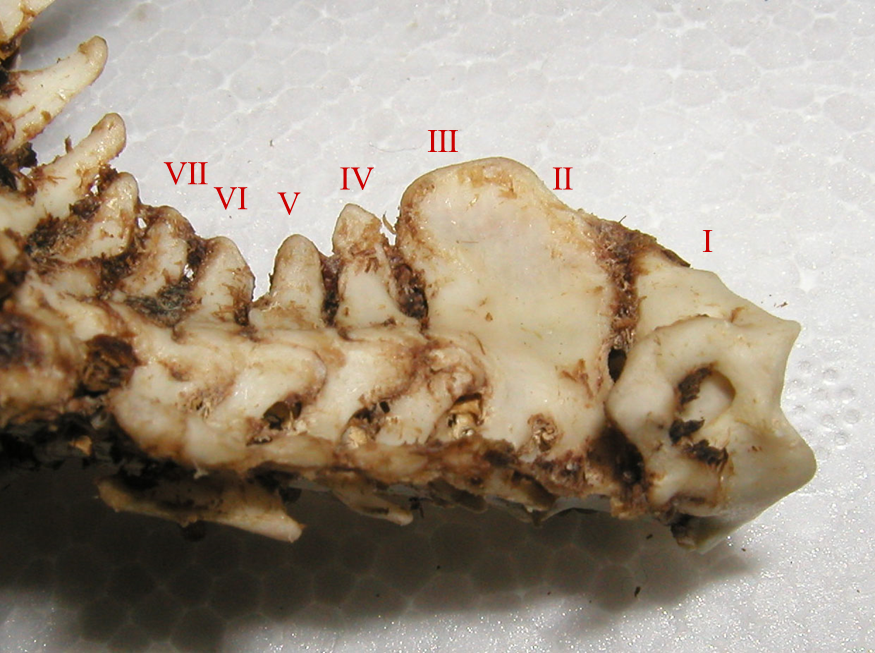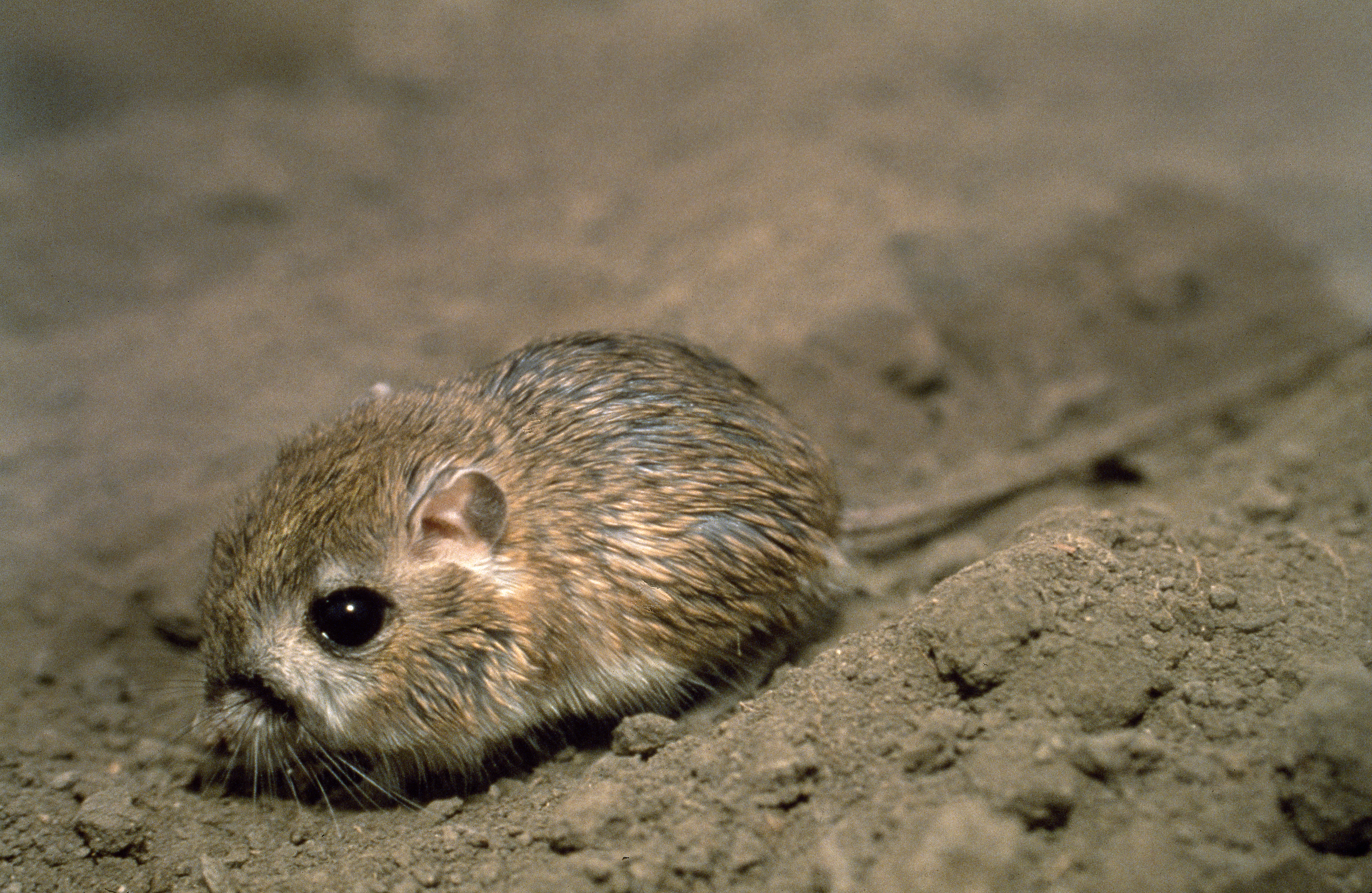|
Springhare
''Pedetes'' is a genus of rodent, the springhares, in the family Pedetidae. Members of the genus are distributed across southern and Eastern Africa. Species A number of species both extant and extinct are classified in the genus ''Pedetes''. They include: * South African springhare or ''springhaas'' (''Pedetes capensis'') * East African springhare (''Pedetes surdaster'') * ''Pedetes laetoliensis'' (Davies, 1987) (Pliocene fossil) Throughout the 20th century, the living species (and occasionally the prehistoric one) were merged into ''P. capensis'', making the genus monotypic. Ecology These rodents are generally nocturnal and sleep through the day in burrows they dig. They feed on foliage, roots and other vegetable matter, and occasionally arthropods. Outside the burrow they usually move around by hopping on their hind legs. When only one springhare species was recognized, it was listed as vulnerable by the IUCN in 1996 due to an approximately 20% decrease in the population o ... [...More Info...] [...Related Items...] OR: [Wikipedia] [Google] [Baidu] |
South African Springhare
The South African springhare (''Pedetes capensis'') ( af, springhaas) is a medium-sized terrestrial and burrowing rodent. Despite the name, it is not a hare. It is one of two extant species in the genus ''Pedetes'', and is native to southern Africa. Formerly, the genus was considered monotypic and the East African springhare (''P. surdaster'') was included in ''P. capensis''. Springhares live throughout semi-arid areas in southern Africa, preferentially in sandy plains and pans with short grasses. In agricultural areas, springhares can be considered a pest due to their destructive feeding on crops. However, they are not currently considered under an impending risk of extinction. Characteristics The springhare resembles a small kangaroo with well-developed hind legs, short front legs, and a long tail which comprises half of its body length. As well as a long tail, springhares have relatively large eyes and ears. Adults can attain in length and weigh an average of . Similar to ... [...More Info...] [...Related Items...] OR: [Wikipedia] [Google] [Baidu] |
Pedetes Capensis
The South African springhare (''Pedetes capensis'') ( af, springhaas) is a medium-sized terrestrial and burrowing rodent. Despite the name, it is not a hare. It is one of two extant species in the genus ''Pedetes'', and is native to southern Africa. Formerly, the genus was considered monotypic and the East African springhare (''P. surdaster'') was included in ''P. capensis''. Springhares live throughout semi-arid areas in southern Africa, preferentially in sandy plains and pans with short grasses. In agricultural areas, springhares can be considered a pest due to their destructive feeding on crops. However, they are not currently considered under an impending risk of extinction. Characteristics The springhare resembles a small kangaroo with well-developed hind legs, short front legs, and a long tail which comprises half of its body length. As well as a long tail, springhares have relatively large eyes and ears. Adults can attain in length and weigh an average of . Similar to ... [...More Info...] [...Related Items...] OR: [Wikipedia] [Google] [Baidu] |
Pedetidae
The Pedetidae are a family (biology), family of mammals from the rodent order. The two living species, the springhares, are distributed throughout much of southern Africa and also around Kenya, Tanzania, and Uganda. Fossils have been found as far north as Turkey.McKenna, M.C. and Bell, S.K. 1997. Classification of Mammals: Above the species level. New York: Columbia University Press, 631 pp. (p. 185) Together with the anomalures and Cameroon scaly-tail, zenkerella, Pedetidae forms the suborder Anomaluromorpha. The fossil genus ''Parapedetes'' is also related. Taxonomy The family includes one living genus and three extinct genera. The Asian fossil ''Diatomys'' was previously included, but is now classified in the family Diatomyidae with the Laotian rock rat. *Family Pedetidae **Genus ''Pedetes'' ***South African springhare, ''P. capensis'' ***†''Pedetes gracilis'' ***†''Pedetes hagenstadti'' ***East African springhare, ''P. surdaster'' **Genus †''Megapedetes'' ** ... [...More Info...] [...Related Items...] OR: [Wikipedia] [Google] [Baidu] |
Jerboa
Jerboas (from ar, جربوع ') are hopping desert rodents found throughout North Africa and Asia, and are members of the family Dipodidae. They tend to live in hot deserts. When chased, jerboas can run at up to . Some species are preyed on by little owls (''Athene noctua'') in central Asia. Most species of jerboas have excellent hearing that they use to avoid becoming the prey of nocturnal predators. The typical lifespan of a jerboa is around 6 years. Taxonomy Jerboas, as previously defined, were thought to be paraphyletic, with the jumping mice (Zapodidae) and birch mice (Sminthidae) also classified in the family Dipodidae. However, phylogenetic analysis split all three as distinct families, leaving just the jerboas in Dipodidae and revealing them to be a monophyletic group. Anatomy and body features Jerboas look somewhat like miniature kangaroos, and have some external similarities. Both have long hind legs, short forelegs, and long tails. Jerboas move around in a similar ... [...More Info...] [...Related Items...] OR: [Wikipedia] [Google] [Baidu] |
Pedetes
''Pedetes'' is a genus of rodent, the springhares, in the family Pedetidae. Members of the genus are distributed across southern and Eastern Africa. Species A number of species both extant and extinct are classified in the genus ''Pedetes''. They include: * South African springhare or ''springhaas'' (''Pedetes capensis'') * East African springhare (''Pedetes surdaster'') * ''Pedetes laetoliensis'' (Davies, 1987) (Pliocene fossil) Throughout the 20th century, the living species (and occasionally the prehistoric one) were merged into ''P. capensis'', making the genus monotypic. Ecology These rodents are generally nocturnal and sleep through the day in burrows they dig. They feed on foliage, roots and other vegetable matter, and occasionally arthropods. Outside the burrow they usually move around by hopping on their hind legs. When only one springhare species was recognized, it was listed as vulnerable by the IUCN in 1996 due to an approximately 20% decrease in the population o ... [...More Info...] [...Related Items...] OR: [Wikipedia] [Google] [Baidu] |
East African Springhare
The East African springhare (''Pedetes surdaster''), is not closely related to the hare, which is a lagomorph, but is a member of the Pedetidae, a rodent family. Taxonomy ''Pedetes surdaster'' was recognised by Matthee and Robinson in 1997 as a species distinct from the southern African springhare ''(P. capensis)'' based on genetic, morphological, and ethological differences. ''P. capensis'' from South Africa has fewer chromosomes (2n= 38) than does ''P. surdaster'' which has (2n = 40) and some other genetic variations. The species was confirmed by Dieterlen in 2005. Unlike South African springhare (Pedetes capensis), the second and third cervical vertebrae are fused in this species. Distribution This species is found in central and southern Kenya and most of Tanzania. A single specimen has been recorded in Uganda near the Kenya border, at Mount Moroto. It is found from sea level up to an altitude over 2,000 m. Description The East African springhare resembles a small kang ... [...More Info...] [...Related Items...] OR: [Wikipedia] [Google] [Baidu] |
Kangaroo Rat
Kangaroo rats, small mostly nocturnal rodents of genus ''Dipodomys'', are native to arid areas of western North America. The common name derives from their bipedal form. They hop in a manner similar to the much larger kangaroo, but developed this mode of locomotion independently, like several other clades of rodents (e.g. dipodids and hopping mice). Description Kangaroo rats are four or five-toed heteromyid rodents with big hind legs, small front legs, and relatively large heads. Adults typically weigh between Nader, I.A. 1978"Kangaroo rats: Intraspecific Variation in ''Dipodomus spectabilis'' Merriami and ''Dipodomys deserti'' Stephens" ''Illinois biological monographs''; 49: 1-116. Chicago, University of Illinois Press. The tails of kangaroo rats are longer than both their bodies and their heads. Another notable feature of kangaroo rats is their fur-lined cheek pouches, which are used for storing food. The coloration of kangaroo rats varies from cinnamon buff to dark gray, dep ... [...More Info...] [...Related Items...] OR: [Wikipedia] [Google] [Baidu] |
Kangaroo Mouse
A kangaroo mouse is either one of the two species of jumping mouse (genus ''Microdipodops'') native to the deserts of the southwestern United States, predominantly found in the state of Nevada. The name "kangaroo mouse" refers to the species' extraordinary jumping ability, as well as its habit of bipedal locomotion. The two species are: *Dark kangaroo mouse – ''Microdipodops megacephalus'' *Pale kangaroo mouse – ''Microdipodops pallidus'' Both species of kangaroo mouse live in sandy desert ecosystems, and forage for seeds and vegetation amongst the scrub brush of their native habitat. The dark kangaroo mouse is also known to feed occasionally on insects and carrion. The mouse rarely drinks water, instead deriving it metabolically from the foods it eats. The kangaroo mouse collects food and maintains large caches in their burrows, which are excavated to a length of between 3 and 8 feet (1 to 2.5 meters). The burrow, the entrance to which the mouse covers during daylight ... [...More Info...] [...Related Items...] OR: [Wikipedia] [Google] [Baidu] |
Hopping Mouse
A hopping mouse is any of about ten different Australian native mice in the genus ''Notomys''. They are rodents, not marsupials, and their ancestors are thought to have arrived from Asia about 5 million years ago. All are brown or fawn, fading to pale grey or white underneath, have very long tails and, as the common name implies, well-developed hind legs. Half of the hopping mouse species have become extinct since European colonisation. The primary cause is probably predation from introduced foxes or cats, coupled with competition for food from introduced rabbits and hoofed mammals. A hopping mouse's primary diet is seeds. An Australian hopping mouse can concentrate urine to as high as 10,000 mOsm/L (10-20 times higher than a human). This allows it to survive in the desert without drinking water. Species * The spinifex hopping mouse (''Notomys alexis'') occurs throughout the central and western Australian arid zones, occupying both spinifex-covered sand flats and stabilised s ... [...More Info...] [...Related Items...] OR: [Wikipedia] [Google] [Baidu] |
Jumping Mouse
Zapodidae, the jumping mice, is a family of mouse-like rodents in North America and China. Although mouse-like in general appearance, these rodents are distinguished by their elongated hind limbs, and, typically, by the presence of four pairs of cheek-teeth in each jaw. There are five toes to all the feet, but the first in the fore-feet is rudimentary, and furnished with a flat nail. The tail makes up about 60% of its body length and is used to gain balance while jumping. The cheeks have pouches. The Sichuan jumping "yeti" mouse (''Eozapus setchuanus'') from China can be identified by the ‘Y’ marking on its belly. Jumping mice live in wooded areas, grassy fields and alpine meadows. When disturbed, they start, in enormous bounds of eight or ten feet in length, which soon diminish to three or four, and in leaping the feet scarcely seem to touch the ground. They are nocturnal and generally live alone. The nest is placed in clefts of rocks, among timber, or in hollow trees, and ... [...More Info...] [...Related Items...] OR: [Wikipedia] [Google] [Baidu] |
Dipodid
Jerboas (from ar, جربوع ') are hopping desert rodents found throughout North Africa and Asia, and are members of the family Dipodidae. They tend to live in hot deserts. When chased, jerboas can run at up to . Some species are preyed on by little owls (''Athene noctua'') in central Asia. Most species of jerboas have excellent hearing that they use to avoid becoming the prey of nocturnal predators. The typical lifespan of a jerboa is around 6 years. Taxonomy Jerboas, as previously defined, were thought to be paraphyletic, with the jumping mice (Zapodidae) and birch mice (Sminthidae) also classified in the family Dipodidae. However, phylogenetic analysis split all three as distinct families, leaving just the jerboas in Dipodidae and revealing them to be a monophyletic group. Anatomy and body features Jerboas look somewhat like miniature kangaroos, and have some external similarities. Both have long hind legs, short forelegs, and long tails. Jerboas move around in a similar ... [...More Info...] [...Related Items...] OR: [Wikipedia] [Google] [Baidu] |
Convergent Evolution
Convergent evolution is the independent evolution of similar features in species of different periods or epochs in time. Convergent evolution creates analogous structures that have similar form or function but were not present in the last common ancestor of those groups. The cladistic term for the same phenomenon is homoplasy. The recurrent evolution of flight is a classic example, as flying insects, birds, pterosaurs, and bats have independently evolved the useful capacity of flight. Functionally similar features that have arisen through convergent evolution are ''analogous'', whereas '' homologous'' structures or traits have a common origin but can have dissimilar functions. Bird, bat, and pterosaur wings are analogous structures, but their forelimbs are homologous, sharing an ancestral state despite serving different functions. The opposite of convergence is divergent evolution, where related species evolve different traits. Convergent evolution is similar to parallel evo ... [...More Info...] [...Related Items...] OR: [Wikipedia] [Google] [Baidu] |



.jpg)